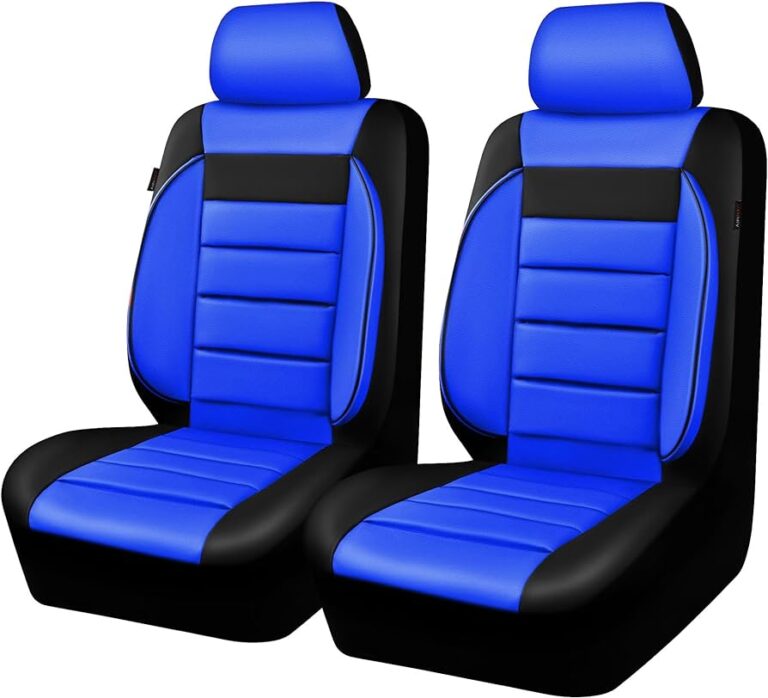What are the cons of leatherette? Pitfalls Of Leatherette
The cons of leatherette include limited breathability and less durability than genuine leather. Leatherette, a synthetic material designed to mimic the look and feel of leather, lacks the natural pores that allow for breathability, leading to discomfort and a sweaty feel.
In terms of durability, leatherette is not as long-lasting as genuine leather and may crack or peel over time. However, leatherette is generally more affordable and can be easier to clean and maintain than real leather. Overall, while leatherette may be a cost-effective alternative to leather, its drawbacks in terms of breathability and durability should be considered before making a purchasing decision.
Unveiling Pitfalls Of Leatherette
Leatherette, a synthetic material designed to mimic the look and feel of genuine leather, has gained popularity in recent years. However, it is worth considering the disadvantages of using leatherette in various applications.
Leatherette is typically made from a combination of fabric and polyurethane, bonded together to create a leather-like texture. While the initial appeal lies in its affordability and availability in various colors and patterns, there are some significant drawbacks associated with this material.
One of the primary concerns surrounding leatherette is its impact on the environment. The manufacturing process involves the use of harmful chemicals, which can contribute to air and water pollution. Additionally, leatherette is not biodegradable and takes a considerable amount of time to break down, leading to further ecological implications.
Although leatherette may initially appear durable, it tends to wear out over time. The synthetic material lacks the natural strength and resilience of genuine leather, making it susceptible to cracking, peeling, and tearing. Additionally, prolonged exposure to sunlight and heat can cause the material to fade and deteriorate further.
Environmental Impact And Sustainability
Leatherette, although commonly used as an alternative to genuine leather, has its drawbacks, particularly in terms of its environmental impact and sustainability. Production processes associated with leatherette can result in significant pollution. For instance, the manufacturing of leatherette involves the use of chemicals such as PVC and plasticizers, which can be harmful to the environment and human health.
Additionally, leatherette is non-biodegradable, meaning it does not decompose naturally and instead contributes to landfill waste. This further exacerbates the environmental concerns surrounding leatherette. As consumers become more conscious of the environmental impact of their choices, it is important to consider the negative consequences associated with leatherette and explore more sustainable alternatives.
Leatherette Durability Concerns
Leatherette, also known as faux leather, has some durability concerns. Over time, it may crack, peel or fade, which can affect its overall appearance and lifespan. However, proper maintenance and care can help to extend its durability.
One of the main cons of leatherette is its susceptibility to cracks and peeling over time. While it may initially have a smooth and glossy appearance, continuous use and exposure to a variety of environmental conditions can cause the material to deteriorate. Aging and wear can also affect the durability of leatherette, leading to a less appealing and less sturdy surface.
Maintenance of leatherette can be more challenging compared to real leather. It requires regular cleaning and conditioning to prevent the material from drying out and losing its luster. Moreover, cleaning agents and excessive heat can cause discoloration and further damage to the surface. This adds to the overall maintenance costs and efforts when compared to real leather.
| Cons of Leatherette |
|---|
| Susceptibility to cracks and peeling |
| Aging and wear over time |
| Maintenance challenges compared to real leather |
Aesthetic And Comfort Limitations
Leatherette, while a popular alternative to genuine leather, does have some cons to consider. One major difference between leatherette and genuine leather is the feel and look. While leatherette can have a similar appearance to leather, it often lacks the soft and supple feel that genuine leather is known for. This can result in a less luxurious and comfortable experience.
Another limitation of leatherette is its potential for discomfort in extreme temperatures. Unlike genuine leather, which can adapt to the body’s temperature and provide a comfortable experience, leatherette does not have the same flexibility. In hot weather, leatherette can become sticky and uncomfortable, while in cold weather, it can feel stiff and rigid.
Additionally, leatherette may also suffer from color fading over time, especially when exposed to sunlight. Unlike genuine leather that develops a patina and gains character with age, leatherette tends to retain its original appearance without showing signs of wear. This lack of natural aging can be a downside for those who appreciate the unique and evolving qualities of genuine leather.
Health And Ethical Considerations
Leatherette, despite its popularity and affordability, has its fair share of drawbacks. From a health and ethical standpoint, there are several considerations to keep in mind. Firstly, the chemicals used in the manufacturing process of leatherette can be concerning. These chemicals, such as phthalates, can pose health risks for individuals who are exposed to them over long periods.
Additionally, the production of leatherette raises questions surrounding animal welfare. While no animals are directly involved in the making of leatherette, the material is often marketed as a substitute for genuine leather. This can perpetuate the demand for animal hides, indirectly contributing to animal cruelty.
Furthermore, prolonged use of leatherette can have health implications for humans. The material does not breathe as well as genuine leather and can lead to discomfort and sweat accumulation. It is important to consider these factors before deciding on purchasing leatherette products.
Practical Issues With Leatherette
Leatherette, despite its popularity as a cost-effective alternative to genuine leather, has its fair share of practical issues. Firstly, repair difficulties pose a challenge compared to genuine leather. While it is possible to fix rips or tears in real leather, repairing leatherette can be a daunting task, often resulting in visible patches that diminish the aesthetic appeal.
Secondly, the perception of leatherette being a cheaper substitute can have negative implications. Despite its durability, people associate it with lower quality and often perceive genuine leather as a more prestigious material. This perception can have an impact on resale value if you intend to sell your furniture or accessories in the future.
| Cons of Leatherette: |
|---|
| Repair difficulties compared to genuine leather |
| Perception problems and lower resale value |
Considering these practical drawbacks, it is important to weigh the pros and cons of leatherette before making a purchase decision. While it may offer affordability and practicality, genuine leather might still be the preferred choice for those who value longevity and prestige.
Navigating Leatherette’s Shortcomings
|
Leatherette, a synthetic material designed to mimic the look and feel of genuine leather, has gained popularity in various industries. However, it’s important to recognize its drawbacks to make informed purchasing decisions. One major disadvantage of leatherette is its lack of breathability. Unlike genuine leather, leatherette doesn’t allow air to circulate, leading to potential discomfort during prolonged use. Furthermore, leatherette tends to wear and tear more quickly compared to real leather. It is prone to cracking, peeling, and discoloration, especially when exposed to heat or excessive moisture. This limits the lifespan of leatherette products, making them less durable. To extend the life of leatherette items, there are a few tips to follow. Firstly, choosing higher quality faux leather alternatives can mitigate some of the shortcomings of leatherette. Investing in premium synthetic materials with better durability and breathability can provide a longer-lasting solution. Additionally, it’s essential to know when to opt for genuine leather over leatherette. While it may be more costly, genuine leather offers superior longevity and a unique, natural aesthetic. Items like leather furniture, bags, or shoes that are expected to endure frequent use are typically better suited for genuine leather. |
Frequently Asked Questions Of What Are The Cons Of Leatherette?
Is Leatherette Durable?
Yes, leatherette is known for its durability. It is made from synthetic materials, such as vinyl or PVC, which are strong and resistant to wear and tear. This makes it a preferred choice for upholstery and other applications where durability is important.
Is Leatherette Environmentally Friendly?
Leatherette is not considered as environmentally friendly as genuine leather. It is made from synthetic materials, which require chemical processes and consume energy during production. Additionally, leatherette is not biodegradable and can contribute to waste accumulation in landfills.
Does Leatherette Crack Over Time?
While leatherette is durable, it can still crack over time with extended use. Exposure to sunlight, extreme temperatures, or improper care can cause the material to dry out and develop cracks. Regular cleaning and conditioning can help prolong the lifespan of leatherette and prevent cracking.
Conclusion
Overall, while leatherette offers a more affordable and cruelty-free alternative to genuine leather, it does come with its fair share of disadvantages. It may not age as gracefully as real leather, with a tendency to peel and crack over time.
Its synthetic nature also means it may not have the same breathability and natural feel. Additionally, it may not be as durable or long-lasting as genuine leather. Before deciding on leatherette, it’s important to carefully weigh the cons against the benefits and consider your individual needs and preferences.
- Can I Get in a Taxi Without a Car Seat? - January 26, 2025
- Can I Get Chlamydia From a Toilet Seat? - January 26, 2025
- Can I Get an Uber With a Car Seat? - January 26, 2025






